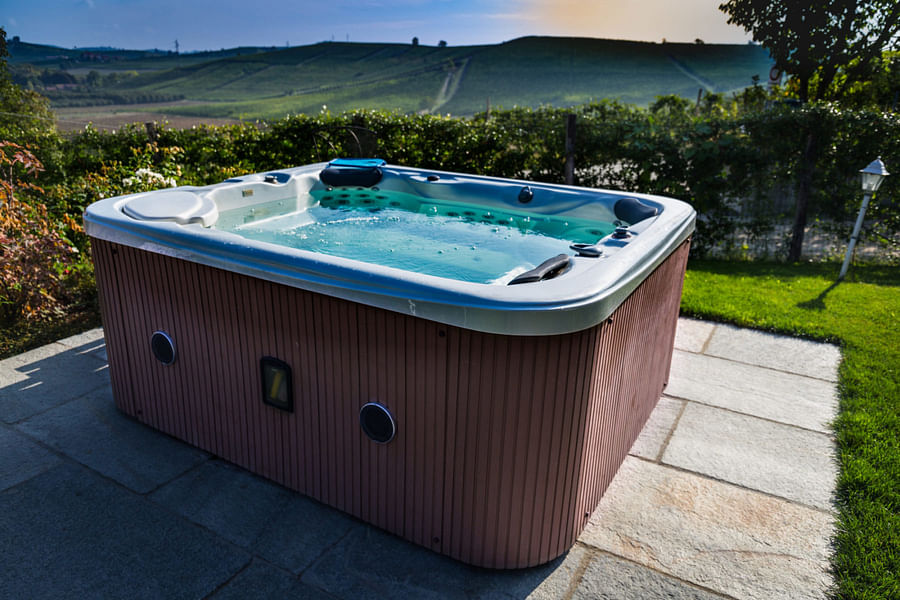How to Open Up a Spa: Key Steps and Considerations

Embarking on the journey to open a spa is an exciting endeavor. However, it's crucial to start with a solid foundation: a well-crafted spa business plan. This plan will serve as your roadmap, guiding you through each step of your spa business journey.
Firstly, your business plan should clearly define your spa's concept. Are you aiming for a holistic wellness retreat or a high-tech medi-spa? Your concept will influence everything from your spa design ideas to the services you offer.

Next, conduct a thorough market analysis. Understand your potential clients, their needs, and how your spa can meet those needs. This will help you position your spa in the market and set competitive prices.
Another key aspect of your spa business plan is your marketing and sales strategy. How will you attract and retain customers? Consider social media marketing, partnerships with local businesses, and loyalty programs.

Lastly, your business plan should outline your financial projections and the cost of opening a spa. This includes startup costs, ongoing expenses, and your expected revenue. It's also wise to include a contingency plan for unexpected costs.
Remember, your spa business plan is not set in stone. It should evolve as your business grows and changes. Regularly reviewing and updating your plan will help you stay on track and achieve your business goals.

Creating a comprehensive spa business plan may seem daunting, but it's a crucial step in starting a spa business. With careful planning and a clear vision, you'll be well on your way to opening a successful spa.
Now that you've crafted your spa business plan, it's time to dive into the second key step: obtaining your esthetician certification. This is a crucial part of the process, as it equips you with the skills and knowledge needed to provide high-quality spa services.
What is an Esthetician Certification?
An esthetician certification is a professional credential that demonstrates your expertise in skincare and spa treatments. It's a must-have for anyone looking to open a spa, as it assures your clients that they're in capable, knowledgeable hands.
How to Get Certified
Getting certified as an esthetician typically involves completing a state-approved training program and passing a licensing exam. The exact requirements can vary by state, so it's important to research the specific criteria in your area.

Choosing the Right Program
When choosing an esthetician program, consider factors like curriculum, cost, and program length. Look for a program that covers a broad range of topics, from skincare techniques to spa management tips. This will give you a well-rounded education and prepare you for the many aspects of running a spa business.
Benefits of Certification
Beyond meeting legal requirements, esthetician certification offers numerous benefits. It can enhance your credibility, open doors to new opportunities, and even increase your earning potential. Plus, the knowledge and skills you gain can help you create a unique, high-quality spa experience that sets your business apart.
Remember, becoming a certified esthetician is more than just a step in the process of opening a spa—it's a commitment to excellence in your field. With your certification in hand, you'll be well-equipped to provide top-notch spa services and create a successful spa business.
With your esthetician certification secured, you're ready to embark on the next exciting phase of your spa journey: designing the perfect spa. This is where your vision comes to life, and your spa begins to take shape. A well-designed spa not only looks inviting but also enhances the overall client experience.
Firstly, consider your spa's theme and style. This should reflect your brand's personality and resonate with your target audience. Whether you opt for a tranquil, minimalist design or a luxurious, opulent aesthetic, ensure it's consistent throughout your spa.

Next, focus on the layout. A well-thought-out floor plan can optimize your space and improve workflow. Consider the placement of treatment rooms, reception areas, and relaxation zones. Remember, the aim is to create a seamless journey for your clients, from the moment they step into your spa until they leave feeling rejuvenated.

Don't forget about the lighting. Soft, warm lighting can create a calming atmosphere, while brighter lights in treatment rooms can aid estheticians in their work.

Lastly, consider the acoustics. Soundproofing can help maintain a peaceful environment, free from external noise. Soothing background music or nature sounds can further enhance the relaxing ambiance.

Remember, your spa's design should be more than just visually appealing—it should also be functional and conducive to relaxation. After all, a spa is a sanctuary where people come to unwind and rejuvenate. With careful planning and thoughtful design, you can create a spa that not only looks stunning but also provides an unforgettable experience for your clients.
Now that you've designed your dream spa, it's time to delve into the nitty-gritty of managing your spa business. This is where your entrepreneurial spirit truly shines, as you navigate the day-to-day operations and long-term strategies of your spa.
Staffing is a crucial aspect of spa management. You'll need to hire skilled estheticians, front desk staff, and possibly a spa manager. Remember, your staff are the face of your business, so choose individuals who embody your brand's values and can provide exceptional customer service.
Next, consider your inventory management. This includes everything from skincare products to towels and robes. It's essential to keep track of your inventory to avoid running out of supplies or overstocking items.

Another key aspect of spa management is marketing. This can range from social media promotion to email newsletters and loyalty programs. Effective marketing can help attract new clients and retain existing ones.
Lastly, don't forget about financial management. This involves budgeting, tracking expenses, and understanding the cost of opening a spa. It's crucial to keep a close eye on your finances to ensure your spa remains profitable.

Running a spa business can be challenging, but with the right management strategies, it can also be incredibly rewarding. Remember, the key to successful spa management lies in balancing the operational demands with the ultimate goal of providing a serene and rejuvenating experience for your clients.
Let's now delve into one of the most critical aspects of starting a spa business - understanding the costs of opening a spa. It's essential to have a clear picture of the financial commitment involved to ensure your venture is viable and sustainable.
Firstly, you'll need to consider the initial setup costs. These include the cost of leasing or purchasing a suitable location, renovating and decorating the space to create a serene and inviting atmosphere, and purchasing necessary equipment.

Next, factor in the cost of inventory. This includes skincare products, towels, robes, and other supplies needed to provide your services. It's crucial to find reliable suppliers who offer quality products at competitive prices.
Another significant cost is staffing. Hiring skilled estheticians, front desk staff, and possibly a spa manager will be a considerable part of your budget. Remember, investing in your team is investing in your business, as they play a crucial role in providing exceptional customer service and representing your brand.
Don't forget about the ongoing operational costs. These include utilities, maintenance, marketing, insurance, and licensing fees. It's also wise to set aside funds for unexpected expenses that may arise.
Lastly, consider the cost of obtaining the necessary certifications and adhering to spa business regulations. This will vary depending on your location and the specific services you offer. Our esthetician certification guide can provide more detailed information on this topic.
While the cost of opening a spa can be substantial, with careful planning and management, it can be a profitable and rewarding venture. Remember, the key is to balance your expenses with your revenue to ensure your spa remains financially healthy.
Stay tuned for our next section, where we'll explore the complexities of navigating spa business regulations.

As we venture further into the world of spa ownership, we encounter an area that can seem daunting - navigating the labyrinth of spa business regulations. However, understanding these rules is crucial to the successful operation of your spa. Let's break it down into manageable pieces.
Firstly, you'll need to familiarize yourself with the local and state regulations governing spas. These can vary widely, so it's essential to do your research. Some areas to focus on include health and safety standards, employee rights and benefits, and zoning laws.

Next, consider the licensing requirements. To operate a spa, you'll need a business license, and depending on the services you offer, you may need additional licenses or permits. For instance, if you plan to offer massage therapy, you'll need a massage therapy license. Our esthetician certification guide can help you understand the requirements for various spa services.

Insurance is another critical aspect of spa business regulations. You'll need to have adequate coverage to protect your business from potential liabilities. This includes general liability insurance, professional liability insurance, and property insurance.

Finally, remember that regulations can change. It's important to stay updated and ensure your spa remains compliant. Consider consulting with a lawyer or a business advisor who specializes in the spa industry to help you navigate these regulations.

Understanding and adhering to spa business regulations is not just about ticking boxes. It's about ensuring the safety of your clients, protecting your business, and maintaining a high standard of service. So, while it may seem complex, it's an integral part of starting a spa business.
Post a comment